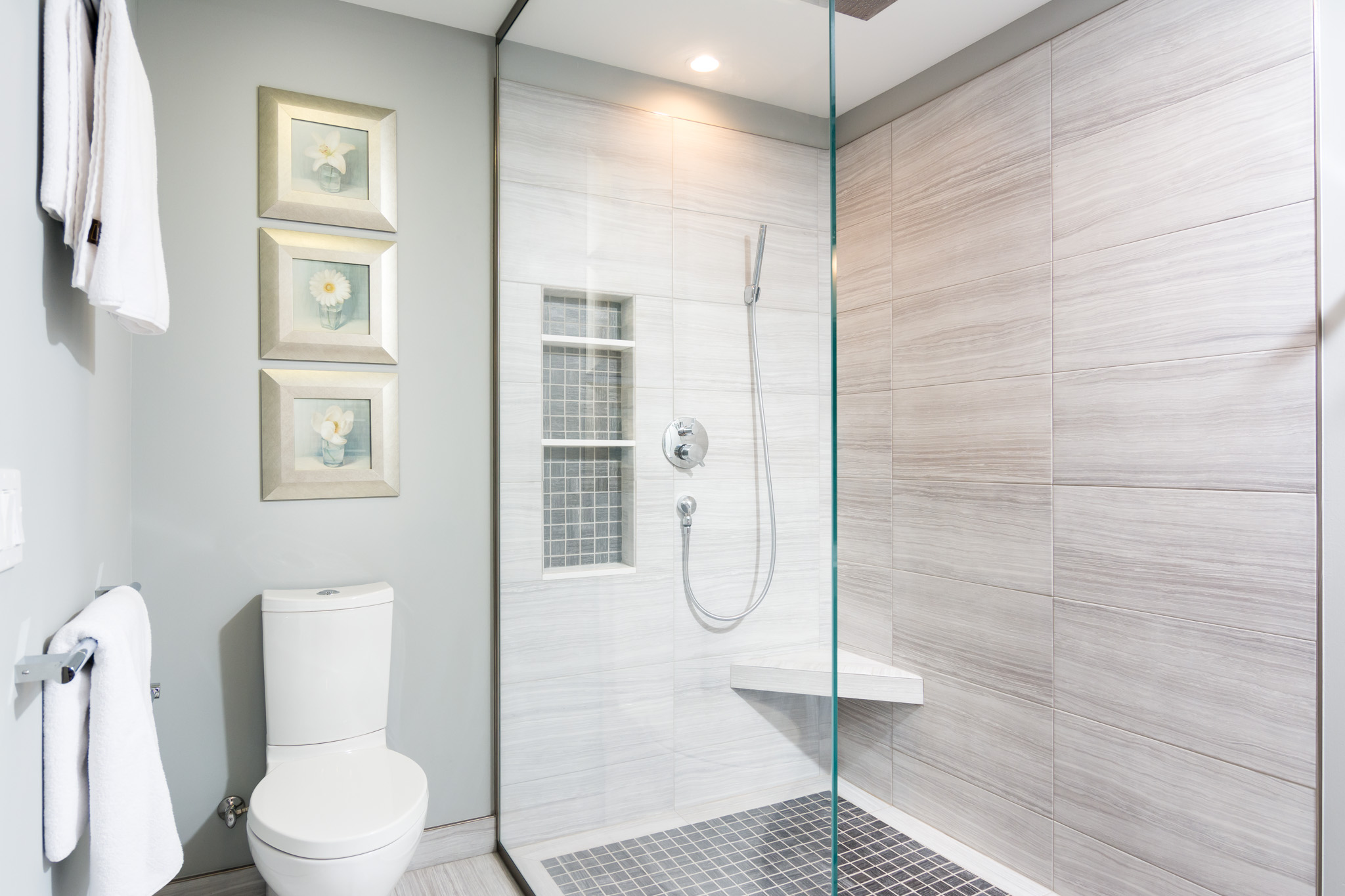Advice on Master Bath Remodeling With a Doorless Shower Design
Doorless Showers in the Master Bath
For homeowners, one of the most exciting projects they can undertake is creating their dream master bathroom. Remodeling a master bath is the number two most popular home improvement project - light behind remodeling the kitchen. It makes sense! The kitchen and the bathroom are the most personal spaces in your home.
Putting your stamp on your master bathroom can be a fun and exciting project. Today, you have more choices than ever before from new exciting technology to interesting design choices that can make your bathroom truly special. One element that is high on homeowner's list of must-haves is a walk-in shower without a door.
The Many Benefits of a Doorless Shower
A doorless shower uses less space in the bathroom because there are no door swings or frame necessary and it's easily adapted to your aesthetic and lifestyle needs. A doorless walk-in shower offers plenty of benefits over traditional shower stalls, especially for older homeowners or those choosing to age-in-place. It's a universal design element that offers:
• Easy Maintenance – Keeping the shower clean, especially if it has sliding glass doors can be a time-consuming chore. A doorless shower takes less time to wipe down and requires minimal surface care.
• Accessibility and Safety – Stepping over a threshold or into a tub can be dangerous as we age. Tripping is a real possibility and if you have compromised mobility showering can be difficult. Sliding glass doors can also be problematic if they stick, or come off their track. A walk-in, doorless shower can remove these concerns and can be installed with low, or no threshold.
Designing a Doorless Shower
Your designer can help you understand all of the options available when it comes to adding a doorless shower to your master bathroom design. There are several considerations you'll need to address when working with your designer.
Ideally, a doorless shower should be placed at a corner in the bathroom, this is important for ensuring privacy. If incorrectly placed, you may notice issues like feeling a draft while showering. This is a common problem. To ensure this, it's important to make sure your shower is placed away from windows.
The size of the enclosure will help to determine what shape is right for your space. Rectangular is the most common, but you can also choose from circular, hexagonal, or even a semi-curved enclosure. Your designer can bring their talent to the table and design a wonderful, focal point in their design with a doorless shower.
Placement of the shower head can help to alleviate splashing and spillage, as can a low threshold. Installing rain shower heads can also help to keep water contained in the shower enclosure. Add slip-resistant tile to the floor as an extra measure of safety.
Keeping to simple basic design principals can help you to create the perfect doorless shower. Whether it's fancy, or basic depends on your taste, style and budget, but carefully weigh both form and function when designing your space.
Six Important Facts About Doorless Showers
Considering a doorless shower? Here are six facts you should know.
1. Doorless showers are always custom.
Placement is important and typically requires custom design. Because it's open to the rest of the bathroom, the walls and floor will need to be designed to direct water away from the opening. That means custom tile work and partitions, or glass walls. Walls and tile need to be placed at a minimum above the showerhead. If you're employing universal design principals, the stall needs to be a minimum of 36” x 36”, optimally you should allow a minimum of 42” x 60”
2. When designing the base, consider your options.
Pre-fab shower pans are typically not designed to accommodate a doorless shower. Water should be directed to drain easily. You have three basic decisions when it comes to the base:
Standard or custom
Threshold height can range from level to three inches
Surface materials
Custom fabrication is best using a solid material or a custom tiled shower base. In order to eliminate the threshold, the base needs to be slightly sloped towards the drain.
3. Shower head placement is crucial.
The shower head should be directed away from the door and other fixture and lighting; the spray radius of the shower head is also a consideration. Using an overhead fixture can also help contain water flow.
4. There's no need for special ventilation or lighting.
If the space is large enough, lighting and ventilation can be included in the enclosure - but it's not necessary.
5. Placement of accessories can be completely customized.
When planning your shower, consider the height and location of niches, a shower seat, and any grab bars. Each can be custom designed for the primary user and any specific needs.
6. Cleaning and maintenance will play a big part in your decisions.
Tiling the entire enclosure, walls, floor and ceiling is often the strategy in a doorless shower design. There was a time that all of this surface area and grout required tedious cleaning and maintenance; today, new products have made this job easier. Consider using stain-proof, mildew resistant grout. Shower surfaces require a simple wipe with a sponge or microfiber cloth to keep your shower sparkling clean!
A doorless shower can be a wonderful choice for your master bathroom. By working with a qualified designer or design-build firm, you can be assured that your shower will be a low-maintenance highly functional element in your new master bathroom. Your designer can help you to create a doorless shower that will not only function perfectly but can also be a wonderful visual focal point in your new spa-like master bath.
For MORE INFORMATION: Visit our Home Page to learn about our complete list of services.

